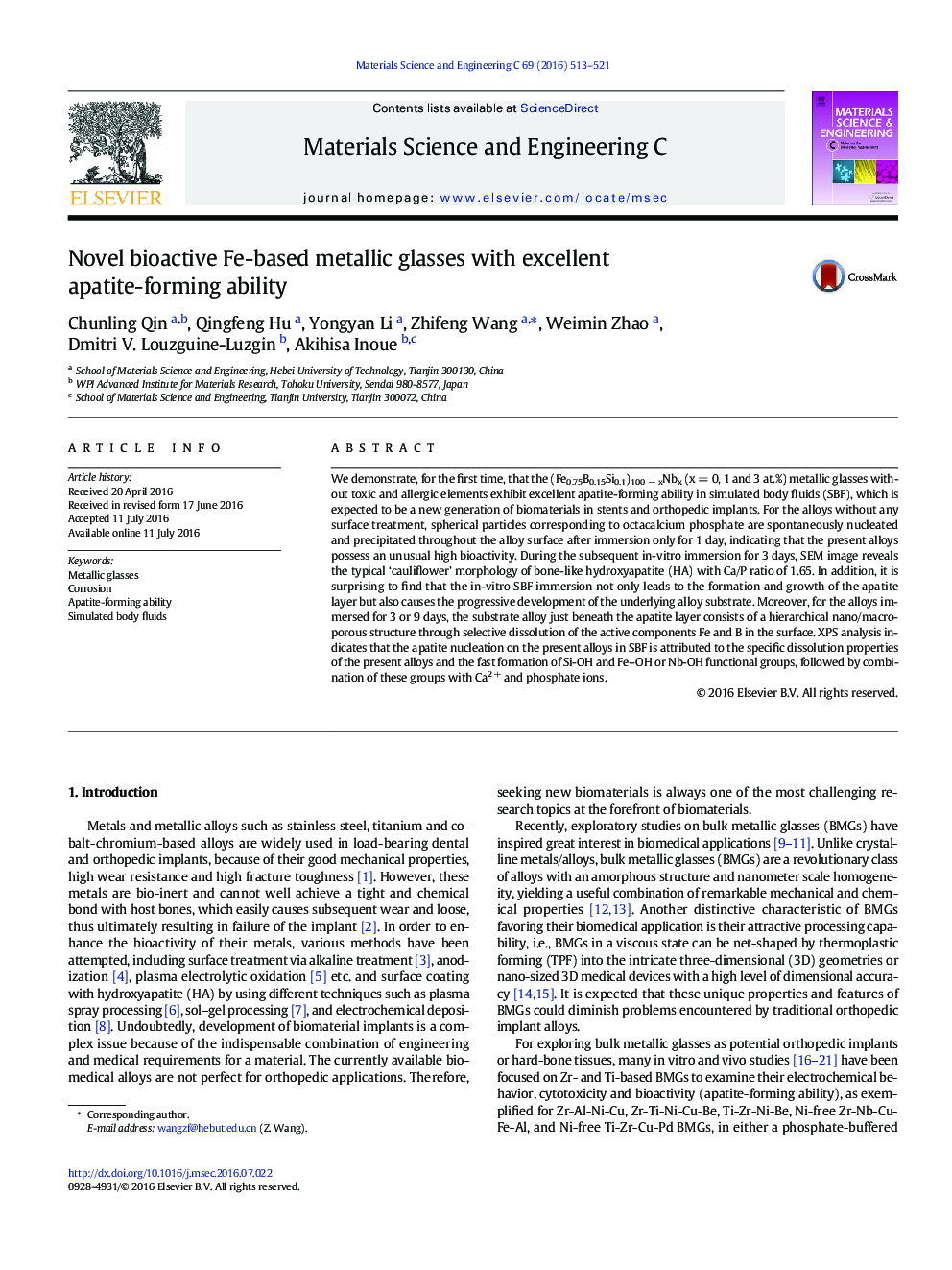| کد مقاله | کد نشریه | سال انتشار | مقاله انگلیسی | نسخه تمام متن |
|---|---|---|---|---|
| 1427882 | 1509152 | 2016 | 9 صفحه PDF | دانلود رایگان |

• Apatite layer is spontaneously formed on surface of Fe-B-Si-(Nb) metallic glasses.
• SBF immersion causes the progressive development of the underlying alloy substrate.
• The substrate alloy just beneath the apatite layer consists of a porous structure.
We demonstrate, for the first time, that the (Fe0.75B0.15Si0.1)100 − xNbx (x = 0, 1 and 3 at.%) metallic glasses without toxic and allergic elements exhibit excellent apatite-forming ability in simulated body fluids (SBF), which is expected to be a new generation of biomaterials in stents and orthopedic implants. For the alloys without any surface treatment, spherical particles corresponding to octacalcium phosphate are spontaneously nucleated and precipitated throughout the alloy surface after immersion only for 1 day, indicating that the present alloys possess an unusual high bioactivity. During the subsequent in-vitro immersion for 3 days, SEM image reveals the typical ‘cauliflower’ morphology of bone-like hydroxyapatite (HA) with Ca/P ratio of 1.65. In addition, it is surprising to find that the in-vitro SBF immersion not only leads to the formation and growth of the apatite layer but also causes the progressive development of the underlying alloy substrate. Moreover, for the alloys immersed for 3 or 9 days, the substrate alloy just beneath the apatite layer consists of a hierarchical nano/macro-porous structure through selective dissolution of the active components Fe and B in the surface. XPS analysis indicates that the apatite nucleation on the present alloys in SBF is attributed to the specific dissolution properties of the present alloys and the fast formation of Si-OH and Fe–OH or Nb-OH functional groups, followed by combination of these groups with Ca2 + and phosphate ions.
Figure optionsDownload as PowerPoint slide
Journal: Materials Science and Engineering: C - Volume 69, 1 December 2016, Pages 513–521